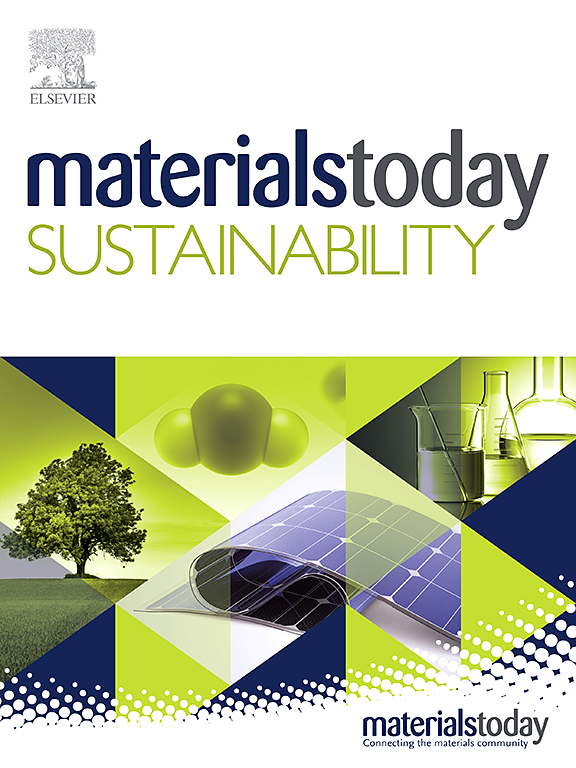Tailoring morphology-controlled bismuth vanadate composite with graphitic carbon nitride for photocatalytic H2 evolution
IF 7.9
3区 材料科学
Q1 GREEN & SUSTAINABLE SCIENCE & TECHNOLOGY
引用次数: 0
Abstract
Hydrogen energy serves as a significant and environmentally benign energy source. Photocatalytic water splitting, an exemplary alternative and eco-friendly process, is advantageous as it operates at lower temperatures and requires less energy. Investigations into the role of bismuth vanadate morphology—specifically non-uniform shapes (NS-BV), polyhedron (PD-BV), and nanoflakes (NF-BV)—alongside graphitic carbon nitride (GCN) revealed significant influences on hydrogen production through visible light-driven water splitting. The NF-BV/GCN catalyst demonstrated a remarkable hydrogen production rate of 86.62 μmol/g.h, surpassing the NS-BV/GCN, PD-BV/GCN, and pure GCN catalysts by factors of 1.35, 1.42, and 2.03, respectively. This enhanced performance was attributed to its heterostructure, which has a smaller band gap between the valence band of GCN and the conduction band of NF-BV. This configuration facilitates the transfer of photogenerated holes in the valence band of GCN to the photogenerated electrons in the conduction band of NF-BV. Additionally, a higher concentration of surface oxygen vacancies and defect sites on NF-BV trapped electrons, further inhibiting recombination and simultaneously separating electron-hole pairs, thereby significantly enhancing H2 evolution.

用于光催化析氢的石墨化氮化碳钒酸铋复合材料
氢能是一种重要的环保能源。光催化水分解是一种典型的替代和生态友好的工艺,其优点是在较低的温度下运行,需要较少的能源。对钒酸铋形态(特别是非均匀形状(NS-BV)、多面体(PD-BV)和纳米薄片(NF-BV)与石墨氮化碳(GCN)的作用的研究表明,通过可见光驱动的水分解,钒酸铋形态对氢的产生有显著影响。NF-BV/GCN催化剂的产氢率为86.62 μmol/g.h,比NS-BV/GCN、PD-BV/GCN和纯GCN催化剂分别高出1.35、1.42和2.03倍。这种增强的性能归因于其异质结构,GCN的价带和NF-BV的导带之间的带隙较小。这种构型有利于GCN价带的光生空穴向NF-BV导带的光生电子转移。此外,NF-BV表面较高的氧空位和缺陷位点进一步抑制了电子的重组,同时分离了电子-空穴对,从而显著促进了H2的演化。
本文章由计算机程序翻译,如有差异,请以英文原文为准。
求助全文
约1分钟内获得全文
求助全文
来源期刊

Materials Today Sustainability
Multiple-
CiteScore
5.80
自引率
6.40%
发文量
174
审稿时长
32 days
期刊介绍:
Materials Today Sustainability is a multi-disciplinary journal covering all aspects of sustainability through materials science.
With a rapidly increasing population with growing demands, materials science has emerged as a critical discipline toward protecting of the environment and ensuring the long term survival of future generations.
 求助内容:
求助内容: 应助结果提醒方式:
应助结果提醒方式:


